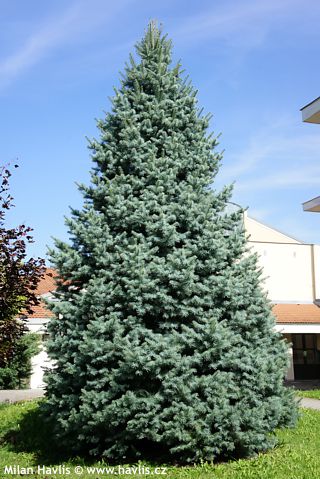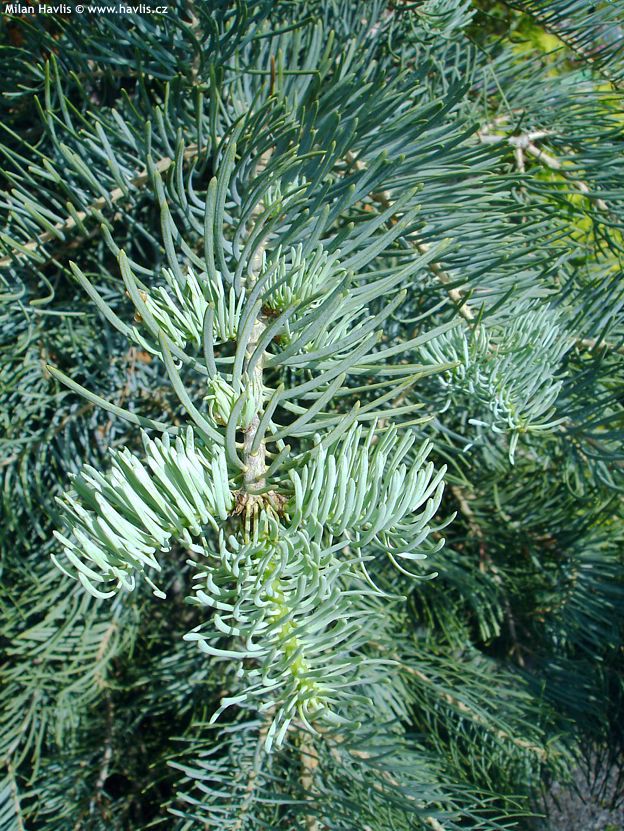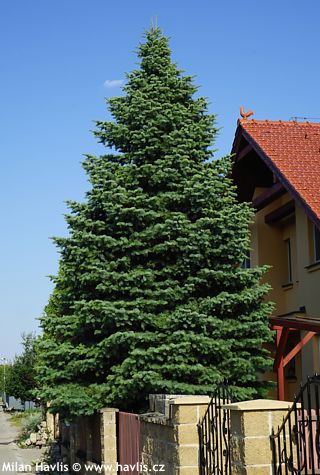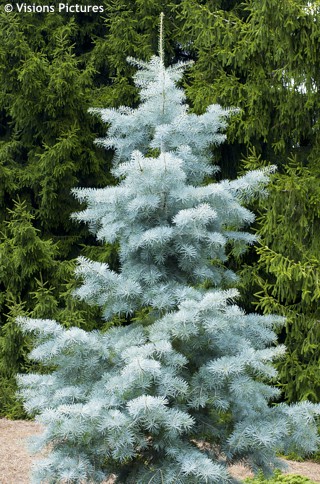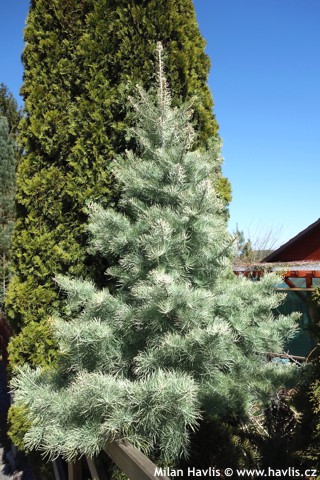Abies concolor 'SILVER BLUE' white fir
size/type
tall tree,tall tree
usual height
10-20m
usual width
2-6m
leaves
evergreen conifer
colour of leaves
location
full to partial sun
soil type
any (acidic to alkaline)
soil moisture requirements
evenly moist but well-drained
USDA zone (lowest)
3 (down to -40°C)
winter protection
for zone 5+6

for zone 7

categorized
Abies
White fir is a very popular conifer in Central European landscape. Its natural habitat extends from the southwestern United States to northern Mexico where, especially in warmer areas, it was reported as somewhat invasive when it forms monocultures. However, it is more often found in mixed forests with diverse species. It is demanded and cultivated for its striking color. Growers in nurseries pay special attention to selecting the best-coloured seedlings since it is often propagated by seeds and plants grown from seeds vary by their traits, especially colour. Numerous varieties have been named offering not only various needle colour but also growth rate, habit, or mature size.Description of the plant:
Silver Blue is a modern selection of white fir which is now considered a variety. The needles are conspicuously blue-green with silver frosting. The needles are 4-6 cm long, upright, flattened, soft and very pleasant to touch. It is propagated by cuttings to make sure that each plant keeps the same traits.It grows about 20-30 cm per year into a nice and symmetrical, densely branched, narrowly cone-like habit with tiered to slightly ascending branches. Although it is a tall conifer when mature, in normal-sized gardens its slow growth rate enables pruning which helps you maintain a desired size. For trees where regular trimming is not expected, it is necessary to choose a location where its mature size will not interfere with other plants close by.
White fir is tolerant of a wide range of soils, it will grow in almost any well-drained soil from slightly acidic to slightly alkaline, preferably moist but never waterlogged. In deep, fertile soil it will grow faster and have stronger and deep roots, whereas in locations with heavy clay, rock, or other unsuitable material lower in the ground it will have a shallow root system. Because of this, it is often described as a species prone to uprooting, but it is very theoretical. In fact, it is much more stable than for example common spruce. Once established it copes well with long periods of drought and heat. Plant it in full sun or partial shade. Hardy to approx. -40 °C. (USDA zone 3).
Last update 14-02-2024
QUICK PRICE OVERVIEW
CURRENTLY SOLD OUT












